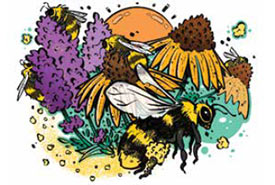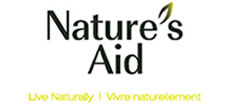Tips for a bee garden

Bee-friendly garden (Illustration by Cory Proulx)
Four tips to help bees
Spring has sprung, and the warming weather and thawing ground may just be the motivation you need for some yard improvements this year. While you’re getting your hands dirty, we invite you to take stock of what you can do to support bees. Native bees are best adapted to native plants, which often require less maintenance from us than ornamental varieties, and provide a higher quality food source for the bees. You don’t need an overhaul right away; you can make an impact by adding one or two native species a year. Here are a few tips for designing a bee garden:
1. Choose plants native to your region
Refer to online sources, a plant guidebook for your region, or consult your local plant nursery for recommendations on bee-friendly plants that are native to your area. Planting a number of different species can provide nectar and pollen as food from spring to fall. Help foraging bees by providing their favourite plants in big patches.
2. Create habitat for bees
Grow plants with hollow stems for cavity-nesting bees, like mason bees and carpenter bees. Come fall, leave any fallen plant material for bees and other pollinators to dwell in over winter.
3. Designate a sunshine spot
Ground-nesting bees, such a sweat bees and mining bees, need loose and sparsely vegetated soil in a sunny location. Provide a patch of bare, dry and well-drained soil in a warm spot.
4. Add a place to quench thirst
Provide a shallow dish of fresh, clean water, with partially submerged rocks as platforms for bees and other pollinators.
This story originally appeared in the spring 2023 issue of the Nature Conservancy of Canada Magazine. To learn more about how you can receive the magazine, click here.



